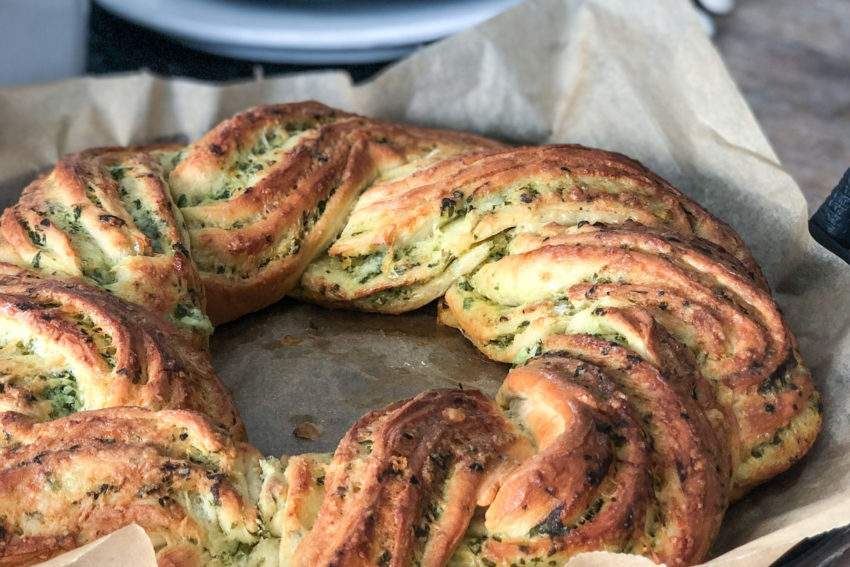First of all, this is not my recipe! The one benefit of isolation during Covid-19 is that I have had the time to start reading through my recipe books. Towards the end of 2019, I purchased a cooking book called “The New Art of Cooking” – A modern guide to preparing and styling delicious food, by Frankie Unsworth. This is one of many recipes that I definitely will be trying during this very strange period we are experiencing and beyond!
Anyhoo, back to this delicious garlic and cheese bread wreath. It might look slightly intimidating, but I can promise you that it is very doable if you follow the instructions.
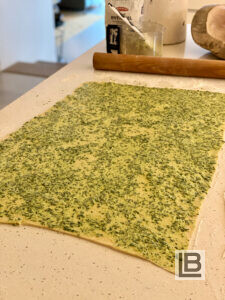
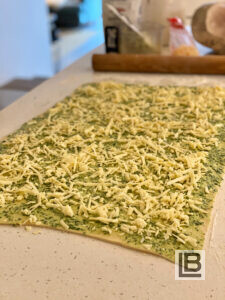
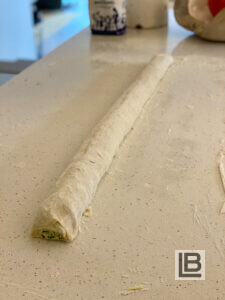
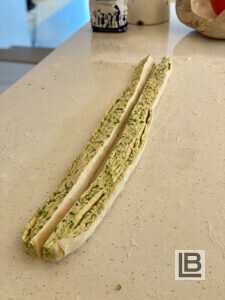
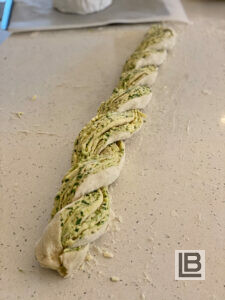
Bon appetit!
You’ll need
- • For the bread
- 500g x white bread flour + extra for dusting
- 2 tsp x fine salt
- 1 tsp x castor sugar
- 4 tsp x dry yeast
- 300ml x warm whole milk
- 2 x eggs, at room temperature
- 50g x unsalted butter, at room temperature and cubed
- A little extra unsalted butter for glazing the finished bread
- A little sunflower oil
- 150g x mature cheddar, grated
- • For the garlic butter
- 100g x salted butter, at room temperature
- 30g x flat leave parsley, roughly chopped
- 6 x garlic cloves, peeled and roughly chopped
Method
- Place the flour in the mixing bowl of your stand mixer.
- On the one side of the flour place the fine salt and on the opposite side, the sugar and yeast. (According to the author of this recipe, salt can inhibit the growth of yeast and therefore the separation)
- Make a well in the centre of the flour, add add only 250ml of the warm milk and 1 of the eggs.
- Fit the dough hook and start by mixing it on a low speed until it starts to come together.
- Add more of the warm milk if necessary, increase the speed and knead for 4-5 minutes until the dough pulls away from the side of the bowl.
- With your mixer running, add the butter one cube at a time and knead for a further 5 minutes.
- Remove the dough from your mixing bowl and form into a ball.
- Oil the same bowl (if you want to save on dirty dishes), place the dough back inside, drizzle a little oil on top and cover loosely with clingfilm. Keep in a warm place for 1-2 hours until the dough has doubled in size.
- In the meantime you can start making the garlic butter by placing the butter, chopped parsley and garlic into a blender and pulse until well combined.
- Once your dough has risen, lightly flour your work top and place the dough on top of it. Add a little flour on top of the dough as well.
- Using your rolling pin, roll and stretch the dough out into a rectangular shape of more or less 60 x 40cm.
- Spread you garlic butter over evenly across the dough right up to the edges. Sprinkle with the cheddar cheese.
- Starting from the long side closets to you, roll the dough into a tight sausage shape. Tuck the seam underneath. (The technique of rolling the dough is similar to that of making cinnamon buns.)
- Squeeze and manipulate the roll to be the same size.
- With a sharp knife, slice the roll equally in half, lengthways.
- Turn the cut-sides facing upwards and start by pressing the furthest ends together.
- Start overlapping the pieces as if you are plaiting them, keeping the cut side upwards. (Try to do this as uniformly as possible as unevenness will be visible in the end result)
- Line a baking tray with parchment paper and place the plate on it. Curve the ends to make a wreath, squeeze the two ends together and tuck underneath.
- Gently shape the wreath so that you have an inner diameter of more or less 20 cm.
- Leave to prove for a further 20 minutes.
- Whilst the last prove is underway, preheat your oven to 200°C.
- Whisk the last egg together and gently brush the wreath.
- Bake for 20-30 minutes or until golden, depending on the thickness of the dough. (If the dough is browning to quickly, reduce the heat of your oven to 180°C.)
- You will know it is ready when the base of the dough sounds hollow when tapped.
- Leave to cool on a wire rack and then brush with the extra butter to make it all shiny and glossy.
Tips : When making the plait into a wreath, you can oil the outside of a 20cm cake tin and wrap the plait around it. It just makes for a more regular end result.

